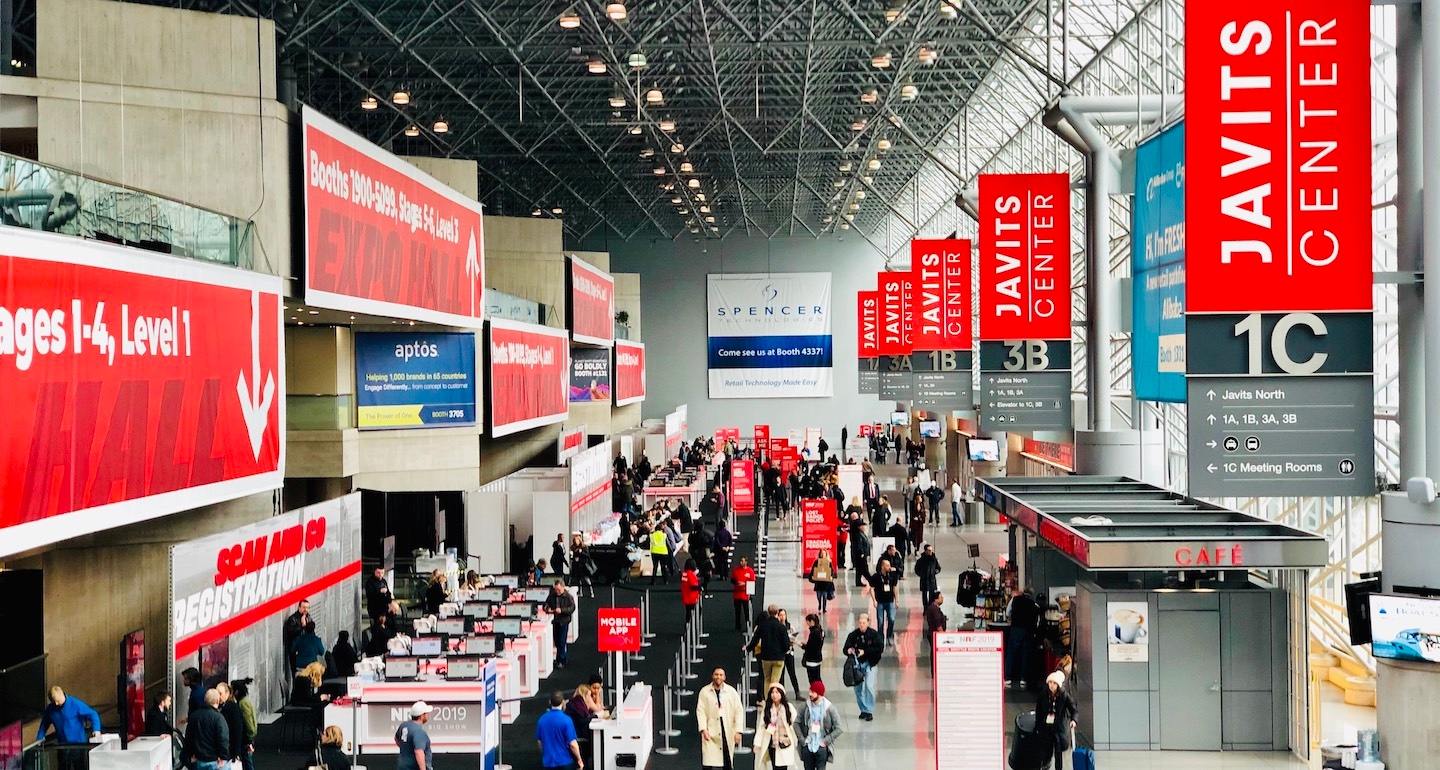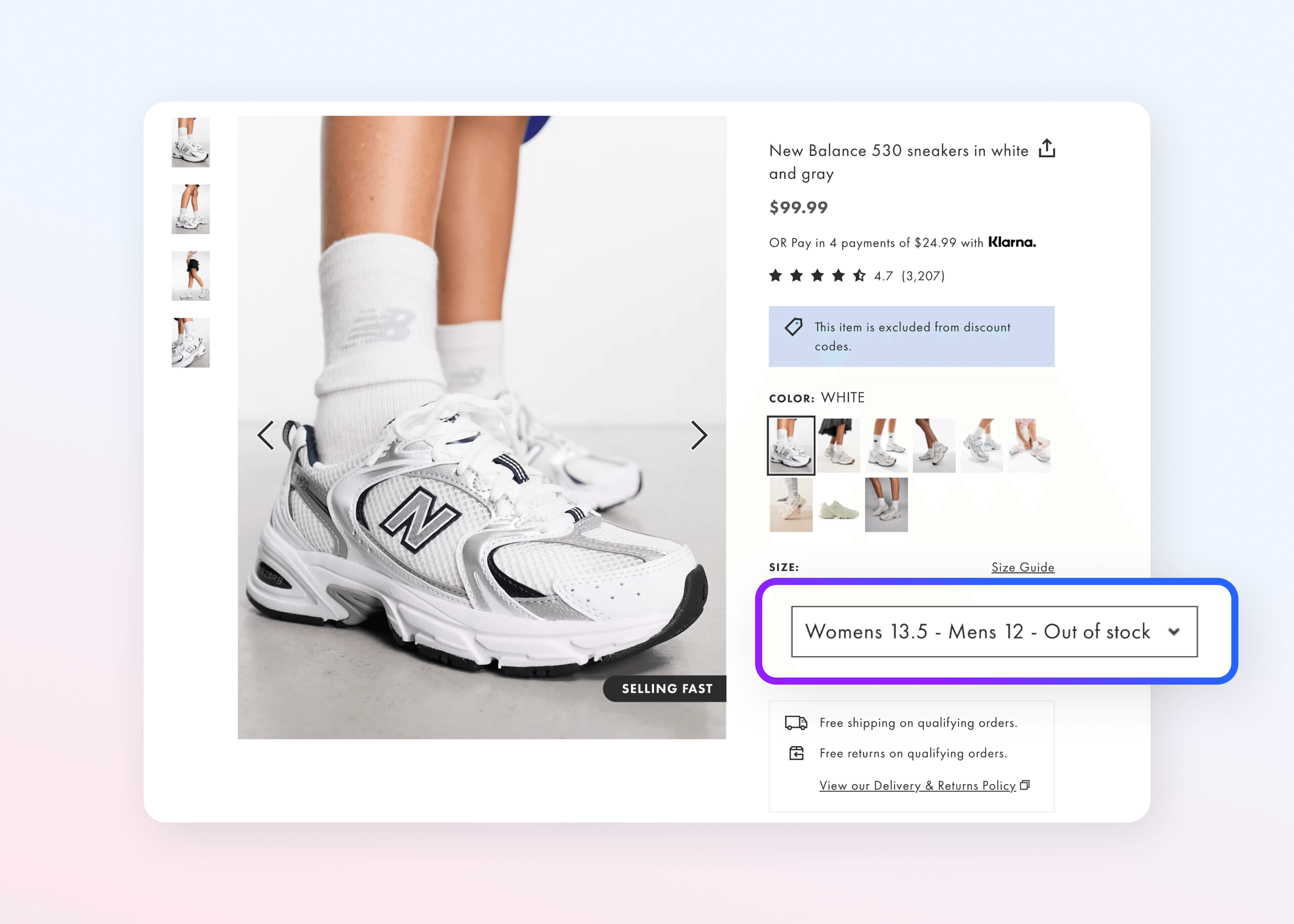Three Signs of Retail's Evolution at NRF 2020

Earlier this week in New York City, the Javits Center was booming. 38,000 attendees from around the globe convened for NRF 2020 to discuss the future of retail. And while the session topics and companies exhibiting on the show floor represented a broad spread of retail, there were three big takeaways that I kept encountering again and again.
Takeaway 1: Platforms for innovation and scale
Platforms are disrupting every single industry, and it’s being felt acutely in retail. On Tuesday morning, I had the opportunity to see Zalando and Nike together on-stage, presenting their strategy to collaborate in a platform model.
Right up front, they noted that marketplace growth has drastically outpaced online and in-store retail. Stuart Hogue, VP, Marketplace Development at Nike shared Nike’s aspirations to increase their sales by developing a more direct relationship with customers – including through their marketplace strategy. He also offered Nike’s perspective on marketplace selling, which shed some light on their recent high-profile move to pull their products out of Amazon’s marketplace, and offers good perspective to other retailers evaluating the marketplace opportunity.
First, any marketplace that Nike joins to sell its products has to matter to Nike customers and fit with their brand. The marketplace should also give them access to customers they wouldn’t otherwise be able to reach. And finally, the marketplace must commit to being a source of only authentic Nike products, something that Amazon notably failed to do.
Where Nike is the seller, Zalando, with $6.6B in overall GMV, is the marketplace operator in this relationship and one of Nike’s largest growth partners in Europe. Carsten Keller, VP, Direct-to-Consumer at Zalando took session attendees through their decision to build a business on the marketplace platform model, bringing third-party sellers in to handle inventory, highlighting:
Availability: Out of stock merchandise leads to dissatisfied customers
Speed: Customer NPS goes up 17% when you offer them same day shipment
Sustainability: In the age of global warming, taking in packages, picking and re-shipping isn’t very environmentally conscious
The Nike-Zalando partnership shows what a true operator-seller partnership can look like. With their connected retail partnership, Nike is actually supporting the fulfillment of Zalando orders, and Zalando will be able to offer click-and-collect from Nike stores.
Takeaway 2: Retail’s changing landscape
None of the retailers in attendance at NRF were ignoring the big elephant in the room – but many of the sessions touched on how they’re getting much more innovative to not just survive, but thrive in an Amazon world.
Lee Peterson, Executive Vice President, Thought Leadership and Marketing at WD Partners gave a great session on this topic. He talked about the rise of the “anything engine” – a product or service that gives consumers easy access to whatever they need. Your smartphone is a great example. Amazon is another. This convenience and utility have trained consumers to think differently, which has also changed their expectations – part of what led to 9,300+ retail store closures in 2019.
If retailers can’t compete with Amazon as they are now, he suggests: Become an “anything engine.” Start by:
Changing your organization to reorient it towards driving real innovation provide experiences customers want
Diversifying what you offer to customers in merchandise
Bringing engaging experiences inside your retail store
In the session, he wasn’t implying that you should try to become Amazon. His point was that there are proven elements to its strategy, like store experience and expanded offerings through an innovative fulfillment model, that retailers can adopt without compromising their brand.
Matthew Rubel, Chairman at MidOcean Partners Private Equity, is a retail veteran and former executive at companies like Cole Haan and J.Crew. He echoed these sentiments in his session, “Uncertain times, how should retailers navigate?” describing how retail needs to evolve:
“Before Amazon’s dominance, retailers had spent years figuring out how to compete with Walmart. Although they’ve evolved to offer more curated assortments and better customer experience, the traditional model of sourcing products is standing in their way of evolving their model.”
The stores that are doing well have a value proposition that stands up in the world of Amazon – and retailers should pursue technology platforms that allow you to scale your offering cost-efficiently.
Takeaway 3: What about external factors like economic uncertainty?
In his session, Matt Rubel of MidOcean Partners Private Equity also touched on how retailers need to approach pricing in the face of a potential recession: “Price is driven by the inefficiency in how retailers offer products today. But, they can change their price structure to be able to compete with Amazon.”
He’s referring to the marketplace model. One example that we heard about is Faire, a wholesale marketplace for small and local brick-and-mortar retailers. Faire’s co-founder and CEO Max Rhodes, called it “a wholesale version of Amazon – independent retailers on one side, and small manufacturers and emerging brands on the other.”
Product is the most valuable thing you can use to compete, because the consumer wants everything and they want it now. And uncertainty in foreign trade policy means that, to deliver the products consumers want, retailers need to diversify their supply chain. A third party seller model accomplishes just that, by giving you many sellers to support you, and the flexibility to respond to changing conditions. Matt’s closing advice to session attendees boiled down to six simple points:
Master the fundamentals
Keep costs in line
Use the tools of today
Keep the powder dry on core offerings, and test and expand to other things
Maintain your flexibility
If you keep the customer happy, you’re going to win
Setting the stage for a strong 2020
As I walked the floor at NRF, one message was crystal clear: the retail landscape is changing, and the companies taking the lead aren’t doing so by doubling down on their current strategies. Seeing major names like Nike, and retail veterans from some of the biggest brands out there, come together to share how they’re evolving their processes to win in the new platform economy was so inspiring – and we can’t wait to see what else 2020 has in store.



